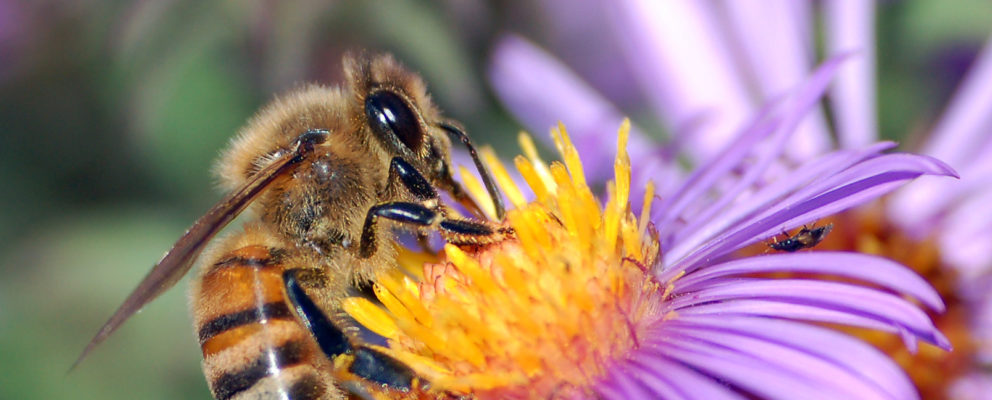Commercial beekeepers illustrate human adaptation to environmental change
By Silke Schmidt
Some environmental problems build up gradually over time, like climate change. Others have a more sudden onset, like colony collapse disorder (CCD) in 2007. It’s a mysterious syndrome that doubled the winter mortality rate of European honey bees managed in the United States from one year to the next for no apparent reason.
We expect drastic events to have drastic effects on the markets that are tied to them—for CCD, that would be the beekeeping industry. But a new study by CEnREP affiliate Wally Thurman, with Randal Rucker and Michael Burgett, defies that expectation. It also sheds light on the reasons behind the counterintuitive finding.
 “Our data from the pre- and post-CCD world show that this profound event had barely observable effects on economic indicators of the American beekeeping industry,” says Thurman, a professor in the Department of Agricultural and Resource Economics at NC State. “That surprised us, but we believe it’s because commercial beekeepers have long had market incentives and mechanisms for adapting to disease.”
“Our data from the pre- and post-CCD world show that this profound event had barely observable effects on economic indicators of the American beekeeping industry,” says Thurman, a professor in the Department of Agricultural and Resource Economics at NC State. “That surprised us, but we believe it’s because commercial beekeepers have long had market incentives and mechanisms for adapting to disease.”
These beekeepers are highly migratory. For example, a North Carolina beekeeper may start his peak season in February by trucking thousands of hives to large California almond orchards. There, he collects fees for pollination services, which turn the almond flowers into the edible nuts the growers can harvest and sell. The regular transfer of pollen also increases almond yield. After pollinating springtime crops in California, the beekeeper will head to Upper Great Plains states like the Dakotas for the summer to let the bees forage for local nectar sources. At the end of the summer, he will extract and sell honey. Thurman says a beekeeper’s average revenues are about 60% pollination services and 40% honey sales, but the numbers vary greatly within the industry.
When the hives are back in North Carolina for the winter, not all colonies will survive until spring. But the typical number of deaths changed with the arrival of CCD in 2007. Averaged from 2007 to 2014, it doubled winter mortality rates from the typical 15% to about 30%. CCD can be devastating for an individual beekeeper, but the new study shows that the industry as a whole has been remarkably resilient. A big reason is that beekeepers can replace lost colonies by splitting healthy colonies and ordering new queen bees from sellers who specialize in raising them.
A queen bee’s only job is laying eggs to replace the female worker bees that live for about 6 weeks. The queen bee sellers use time-honored methods to trick bees into raising queens from eggs that would otherwise become worker bees. To guard against CCD, beekeepers estimate how many new queens they need to purchase to have enough bees on hand for spring pollination.
Since Thurman and co-authors wanted to account for this commercial queen bee market in their analysis, they combed through decades’ worth of American Bee Journal issues to record queen bee prices from the trade periodical’s advertisements. Oregon-based co-author Burgett had already been collecting pollination fees from Pacific Northwest beekeepers for several decades. Other relevant data were available from public sources: the annual number of beekeeper-owned colonies, the amount of produced honey and its market price.
“Our time series analysis of this novel data set showed that CCD may have increased almond pollination fees, but had no measurable impact on other crops, market prices for honey and queen bees, or overall colony numbers,” Thurman says. “We think the study’s conclusions are broadly relevant because CCD is a compelling illustration of the economic engine—markets, property rights and prices—behind human adaptation to environmental change.”
The study has been accepted for publication in the Journal of the Association of Environmental and Resource Economists.
